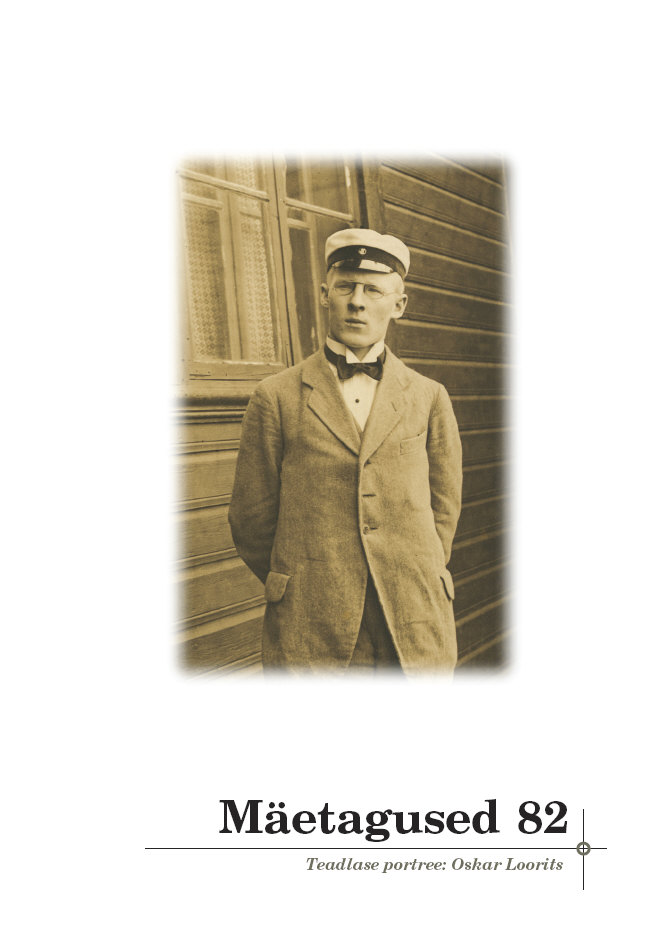Elava rahvalaulu juurde jõudmine: Herbert Tampere teadlaseisiksuse kujunemine
Journey to the living folk song: Development of Herbert Tampere’s scholarly personality
Author(s): Taive SärgSubject(s): Customs / Folklore, Music, Cultural Anthropology / Ethnology, Culture and social structure
Published by: Eesti Kirjandusmuuseum
Keywords: ethnomusicology; folk song; Herbert Tampere; Oskar Loorits; regilaul; traditional music;
Summary/Abstract: The article analyses the life and activity of Estonian ethnomusicologist and folklorist Herbert Tampere (1909-1975), as well as the research history of Estonian folk songs until 1945, also paying attention to the influence of the Estonian Folklore Archives and its head Oskar Loorits. The historical background to Tampere’s activity is the establishment of independent statehood in Estonia (1919) after Estonians had existed as an ethic minority group subjected to the ruling classes of other nationalities for hundreds of years. The scientific and cultural background is constituted by the development of European folkloristics and ethnomusicology and the increasing prestige of folk music and non-western music in Europe, which contributed to the rise of the cultural self-awareness of Estonians as a nation with oral lore different from Indo-European culture. The approach is framed with the metaphor of life and death, which in Herderian way of thinking corresponded to the growth and fading of a nation and its creation. In the 1930s, Tampere brought into the discourse of the Estonian folk song, seemingly in opposition with the gradual fading of the living lore and complaining thereabout, a turn in writing about it, unexpectedly confirming that the folk song was alive. The older folk song started to disappear from public use in the 19th century, when people lost interest in its performance and the newer European folk music style spread more widely. At the same time, they tried to overcome the national inferiority complex that had developed due to existence as a lower class, as well as the oral culture considered as a sign of backwardness, creating on the basis of folklore a new national-language and valuable European literary culture. To accomplish this, the old, evolutionally lower traditional culture had to be abandoned. Writings about the dying folk song helped to encourage people to collect folklore and create distance with the past. In the 20th century, with the development of Estonian national self-awareness and literary culture and the rise of the nation’s self-esteem, and on the other hand the recession of Eurocentric and evolutionist way of thinking in the world of science, a new interest appeared in the structure and performance of the folk song, and it started to be increasingly appreciated and considered as living. Such changes in rhetoric indicate how reality is reflected subjectively, according to standpoints and circumstances. Considering the fact that in the 19th-century social evolution theory folklore and literary culture were attributed to different development stages of a nation, the nation with low self-esteem, striving for literary culture in the 19th century, could be satisfied with the dead folk song, yet in the 20th century, in the light of new culture concepts, it could be declared alive again. In summary it can be said that the following factors helped Tampere achieve a novel approach to folk songs in his research. 1. Tampere came from a talented and educated rural home, in which music and literature were appreciated and in whose neighbourhood different music styles were practised. His interests and skills were shaped by good education at schools with remarkable music teachers and an early contact with folklore collection at the Estonian Students’ Society. 2. Good philological education from the University of Tartu and work at the Estonian Folklore Archives, becoming familiar with folklore collections as well as other young folklorists and linguists, especially cooperation with Oskar Loorits, Karl Leichter, and Paul Ariste, added knowledge of newer research trends, such as ethnology and experimental phonetics. Maybe, paradoxically, the absence of higher music education, which would have directed the young man towards other music ideals, was positive in this respect. 3. The knowledge acquired of the methods and way of thinking in comparative music science provided a theoretical basis for understanding, valuing, and studying non-western music. Professional work was also supported by the development of sound recording and -analysis. 4. The immediate contact with living folk music already in his childhood and later on, when collecting folklore, elaboration of folk songs in the archives and compiling voluminous publications made this manner of expression more familiar. Tampere must have enjoyed the performance of at least some of the regilaul songs as he mentioned nice impressions and the need to delve deeper; also he recorded, studied, and introduced these songs to the public. 5. The heyday of national sciences and national ideals in the Republic of Estonia valued engagement in folklore as the basis of cultural identity. The first folk music reproductions appeared, such as folk dance movement and runic verse recitals at schools, which was why the issues of performance started to be noticed and studied. Oskar Loorits supervised the study and publication of the most Estonian-like (in his own opinion) folklore – folk songs – and it was probably also his influence that made Tampere study the problem of scansion, to systematize and study folk songs, and compile publications.
Journal: Mäetagused. Hüperajakiri
- Issue Year: 2022
- Issue No: 82
- Page Range: 81-130
- Page Count: 50
- Language: Estonian

